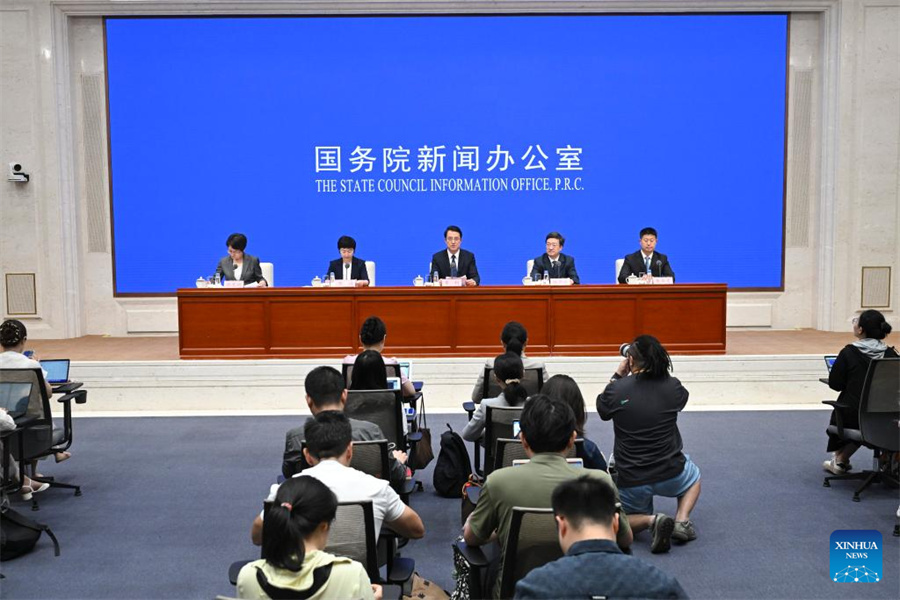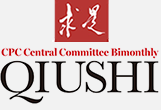Broader, improved medical coverage for a healthier country

Zhang Ke, head of the National Healthcare Security Administration, attends a press conference held by the State Council Information Office (SCIO) on China's healthcare security achievements and its role in advancing economic and social development during the 14th Five-Year Plan period (2021-2025) in Beijing, capital of China, July 24, 2025. [Xinhua/Chen Yehua]
BEIJING -- During the 2021-2025 period, China's basic medical insurance has maintained a coverage rate of around 95 percent, with over 1.32 billion people enrolled in 2024, according to the National Healthcare Security Administration (NHSA).
Zhang Ke, head of the administration, unveiled the data on Thursday at a press conference highlighting achievements during the 14th Five-Year Plan period (2021-2025).
Medical assistance schemes cover approximately 80 million people in China each year, helping to ensure that they can benefit from the insurance program, Zhang said.
According to Li Tao, deputy head of the administration, during the 2021-2025 period, relevant authorities nationwide have spent about 72.3 billion yuan (about 10.1 billion U.S. dollars) to assist people from disadvantaged groups, providing support for 350 million instances of insurance coverage.
Thanks to this support, over 99 percent of China's low-income population and those lifted out of poverty in the country's rural areas are now covered by medical insurance.
SUPPORTING PARENTHOOD, THE VULNERABLE
A total of 253 million people were covered by maternity insurance as of June 2025, with cumulative fund expenditures reaching 438.3 billion yuan, Zhang said.
Maternity insurance benefits have been accessed 96.14 million times since 2021, he added.
Notably, assisted reproductive services are now covered by medical insurance across 31 provincial-level regions and in the Xinjiang Production and Construction Corps, Zhang revealed.
At the same time, China had expanded its long-term care insurance to cover 190 million people by the end of 2024, according to the NHSA.
The long-term care insurance fund has raised over 100 billion yuan and paid out more than 85 billion yuan during the 2021-2025 period. Meanwhile, this insurance program has supported over 2 million people unable to care for themselves -- reducing the financial burden of care services by more than 50 billion yuan, Li said.
China now has over 8,800 designated institutions providing long-term care insurance services, with a workforce of 300,000 caregivers -- with both these figures marking a more than 50-percent increase since the start of the 14th Five-Year Plan period, he noted.
BETTER DRUGS, FAIRER PRICES
During the 2021-2025 period, China's medical insurance spending on innovative drugs has grown significantly with an increase of 40 percent annually. In 2024, meanwhile, related spending reached 3.9 times the amount recorded in 2020, Zhang said.
Since 2021, China has approved over 100 domestically developed innovative drugs for market entry, while its 14th Five-Year Plan period has witnessed the approval of more than 160 groundbreaking medical devices. Many of these advanced devices incorporate cutting-edge technologies -- including deep learning, magnetic levitation and magnetic resonance monitoring.
While promoting medical innovation and expanding access to advanced treatments, China has also strengthened efforts to ensure drug prices remain fair and sustainable.
Since 2018, the country has carried out 10 rounds of centralized medicine procurement, covering 435 medicines, said Shi Zihai, deputy head of the NHSA.
The NHSA has also actively handled cases of irregular drug pricing and urged pharmaceutical companies to rectify their practices. To date, the administration has issued notices to 566 companies -- requiring price adjustments for 726 medicines across various specifications.
In addition, the NHSA has implemented measures to regulate medicine prices, both online and at physical drugstores, Shi said.
























